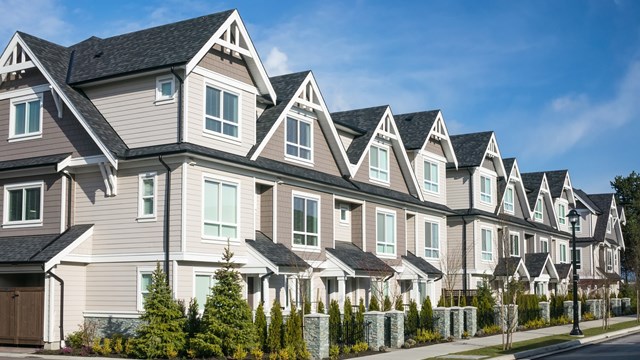
Double taxation is a term often referred to by residents of private communities to describe having to pay property taxes to their town in addition to the monthly maintenance fees they pay to their community association for services like snowplowing and recycling. When a condominium community provides services to its residents that the local municipality would normally pay for, it raises the question of reimbursement to the association for what can potentially seem like an unfair arrangement.
Potential for Inequality
To many both inside and outside homeowners associations and planned communities, it makes sense that association members should be exempt from paying—or get reimbursed for—the services they don't require from the municipality. Ironically, as a selling point to townships, developers sometimes tell local government officials that one benefit to letting them build a private community within a township or municipality is that the town can collect additional tax dollars from new residents without having to provide services to them as the services would be association-provided, according to Michael Karpoff, an attorney with Hill Wallack in Princeton.
But "as more and more communities were built," Karpoff says, "the residents got upset about that because they realized they were paying property taxes to the municipality for the services, but they weren't actually getting the services."
Various lawsuits and debates throughout the state eventually led to legislation that requires municipalities to provide qualified private communities in New Jersey with some of the services that "regular" homeowners receive.
But a private community may have desires and expectations that go beyond what a town currently provides, so they still collect maintenance fees and hire contractors to handle those extra or enhanced services. The Municipal Services Act, enacted in 1993, requires municipalities to reimburse private communities within or adjacent to the townships that pay for certain services. These services include snow and ice removal, electricity costs for street lighting and street collection of recyclables and leaves. Before 1993, there was no reimbursement to communities for these services.
"It's legislation that was enacted to provide private communities with the same types of services that townships and municipalities provide to [single family] homeowners," says Edward Frank, a property manager with Arthur Edwards Inc. in Westwood.
Snow Matters
There's more to reimbursement than a township writing a check to cover your community's expenditure. The reimbursement will be based on what the municipality pays for the service, prorated for the amount of service the community paid for. For example, when it comes to snow removal, a community most likely pays more per mile for snow removal than a township does, but it will be reimbursed based on what the town pays.
According to Frank, "The town has it figured out to a science. The town says, 'We know what it costs to plow a mile of roadway. We know what we pay per hour. We know the cost of fuel, the cost of the truck.' And they put all that together and they come up with a number like $1.22 a mile. Then they look at the community and they say, 'We confirmed with the town engineer that you have 1.7 miles of roadway in your community.' In a private community, a mile of roadway is a lot, but for a town it's nothing."
Even when all of that is settled, differences of opinion can arise. In May of 1998, the Appellate Division of the New Jersey State Superior Court ruled in a case where the township of Vernon and Stonehill Property Owners Association argued over what constituted a street. Stonehill wanted reimbursement for plowing 6.38 miles of roads. The township claimed that that the association had 3.9 miles of roadway. Also because the roads in the development are steep, the association claimed the cost-per-mile should be higher. The court ruled in Stonehill's favor.
"Reimbursement is limited to the extent that it would cost the town if they provided the services," Karpoff says. "If a private association contracts with a snow plowing company, they're going to pay more than a municipality would pay. If the municipality reimburses for snow removal, they only have to pay what it would cost them, not what the association is actually paying."
The court also ruled that the type of road being plowed could be taken into account. Stonehill features many hills, and plowing those is more difficult than plowing a regular street—but the town simply measured the road in determining the amount.
"The trial judge and the appellate court ruled that you can consider the difficulty," Karpoff says. "You don't just necessarily take the average into account—you can add a difficulty factor to determine what the expense [to the town] would be."
In another case, Brianglen II Condominium Assocation vs. the Township of Freehold, it was ruled that even if an association's roads don't meet certain criteria, the township must still reimburse the association for services even if they don't provide the service.
Putting Some Light on the Subject
There are a lot of factors when it comes to snowplowing but street lighting would seem simpler: you turn on lights, you pay for the energy, you get reimbursed, right? Not necessarily.
"The town provides reimbursement based on municipal standards," Frank says. "When you look at what municipal standards are for lighting on a typical street, it's about one street pole every 200 feet. So again, when you look at how a town illuminates its roadways compared to what a private community wants to illuminate, there may be a difference. In any one of our communities, there are three or four light poles within 200 feet. They want it bright for security reasons. So a community may have 25 light poles, and compared to what a town provides, the number gets reduced by almost two thirds. And then you get reimbursed for what the town pays for their utility consumption, which is sometimes less than what a private community pays."
Karpoff says there can be confusion in defining what constitutes a streetlight. "The first question is: Is the light on an actual street [and therefore a streetlight] or is it on a walkway, set back from the street?" he says. "Second, towns don't have uniform rules on where streetlights are placed, so let's say one town has streetlights every 1,000 feet and another says one every mile, and an association has one every 20 feet. Does the town have to pay for all of the association's lights?"
The Stonehill case tackled this issue. Great Gore Village has 387 lights and wanted reimbursement on electrical costs for all of them. The township claimed that it provided lights only at major intersections with county and state roads, so it was only obligated to pay for one light; at the entrance into the community, which was on a county road.
"The trial judge determined that the standard that applied was that every roadway intersection should have a light," Karpoff says. The judge then ruled (and the appellate court upheld the ruling) that the town had to pay for 52 lights, since the community had 52 intersections.
According to Karpoff, the issue of lighting costs still hasn't been completely resolved.
"I don't think the court has really come down with a satisfactory answer to that," he says. "In the Stonehill case, they basically said that the trial court's decision was reasonable, and therefore they affirmed it. But they never came up with a standard formula for what reimbursement for streetlights should be."
Getting Reimbursed
There's more to the arrangement than paying for services and waiting for the check to come from the city or town. Frank says most communities develop a service agreement between the association and the municipality.
"The document sets forth the responsibilities of each party," Frank says. "Typically at year's end, the community provides documentation—copies of paid bills, utility bills, snow plowing bills, street lighting bills. We do it in a very organized fashion, we provide spreadsheets and everything else to the municipality. Then they apply their formula and send a voucher; we sign the voucher, and hopefully get reimbursed within eight or nine months."
When it comes to paying electricity bills, Karpoff says some towns and communities have arrangements where the town pays the utility bill directly.
"Rather than make all the calculations, some towns take over payment for the streetlights and the utility bills the town directly," he says. "That makes it a lot easier."
A Compromise
While residents still have some gripes, Karpoff says the law has turned out to be a pretty good one.
"Overall, it seems to work," he says. "There are still complaints by people because they're still not getting services other people get even though they pay taxes. But it was a compromise."
There are some communities that rely on townships to simply provide services like snowplowing, but in general, residents want their communities plowed sooner than the town would. Karpoff adds that the communities need to plow their driveways and sidewalks (townships aren't required to) so once they pay for that, they tend to go the distance and pay for all plowing.
"In general, the towns prefer not to provide the snowplowing service to communities because they don't want to have complaints from the association residents: 'Where are you? I have to get my car out.' And in some cases, it's very difficult for them to provide the service because it's smaller, winding roads and there are more turns and curves."
Frank believes the reimbursement process runs fairly smoothly. "People have a better understanding of it now," he says. "Years ago, communities would tell you, 'Give them the snowplowing bill for the driveways, give them everything, maybe they'll pay it.' We don't do that. We tell associations to be honest with the municipality, and the municipality will be honest with them."
Anthony Stoeckert is a freelance writer and a regular contributor to The Cooperator.






4 Comments
Leave a Comment